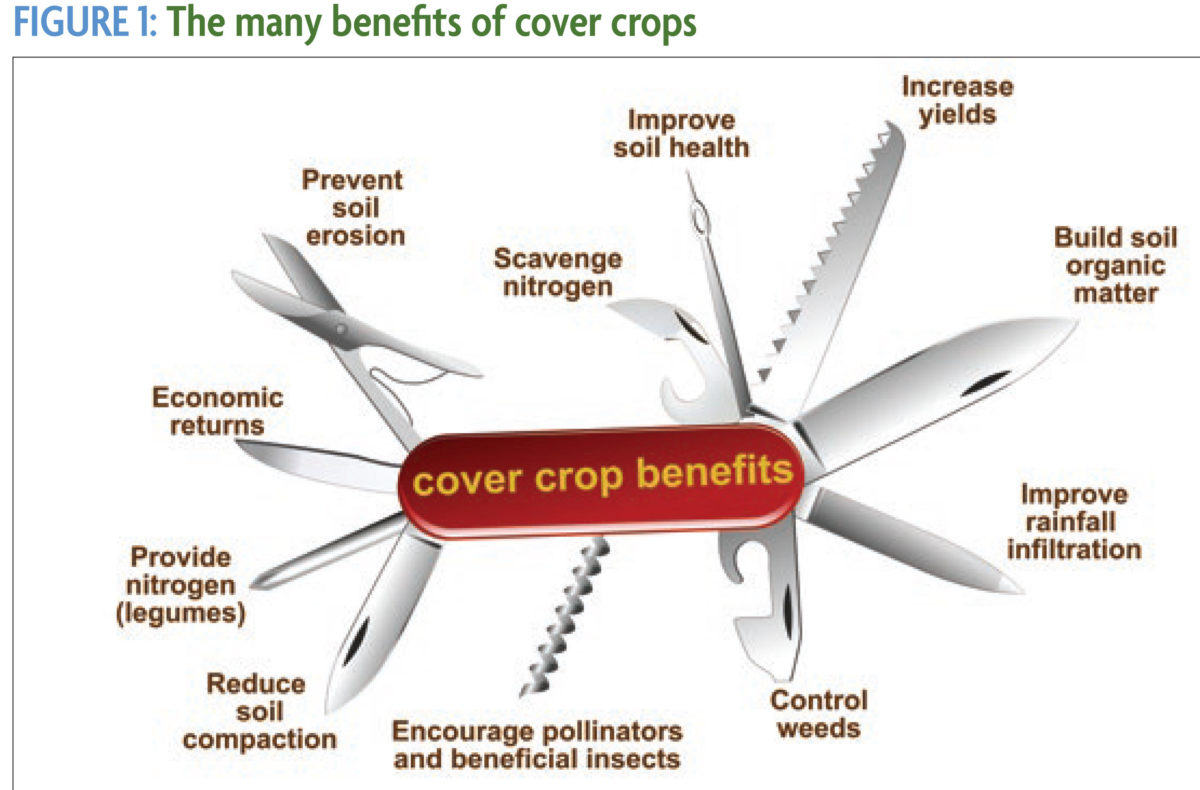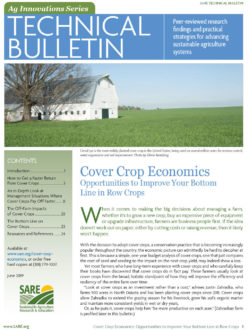
Alabama farmer Annie Dee uses different cover crop mixes depending on her crop rotation and management goals. Reprinted with permission, Progressive Farmer, mid-February 2019
As outlined earlier, there are several different management situations where cover crops pay off faster than usual. Generally, these faster returns occur where farmers are either addressing a specific problem such as herbicide-resistant weeds or soil compaction, and/or where they are seizing opportunities in other aspects of their crop and soil management in order to be more economically efficient overall.
For example, Alabama farmer Annie Dee has been combining cover crops with other conservation practices for many years because of the multiple cost-saving benefits she sees. “If we get a big rain, the cover crops help keep soil from washing away,” says Dee, who farms 4,000 acres of corn and soybeans, with another 3,500 acres of forages and cattle pasture. “They also help build up the fertility of the soil and keep the weeds down.”

By using the baseline numbers on cover crops from the preceding section and then adding in the economic impact of these various management scenarios, a more specific set of economic numbers can be generated. These management-specific numbers are summarized in the “Snapshot” sections at the end of each management section. The intent here is to help producers identify those profitability factors that are relevant to their own farms.
When looking at the management situations that follow, producers or farmer advisors should keep in mind their goals for the cover crops they plan to use on each field, such as helping with compaction (Figure 1). This can help guide their selection of cover crops, help set realistic expectations on potential returns and help suggest what other management changes might be needed to improve overall efficiency.
Cover crops can pay their way more quickly when:
- Herbicide-resistant weeds are a problem
- Cover crops are grazed
- Soil compaction is an issue
- Cover crops are used to speed up and ease the transition to no-till
- Soil moisture is at a deficit or irrigation is needed
- Fertilizer costs are high or manure nutrients need to be sequestered
- Incentive payments are received for using cover crops
